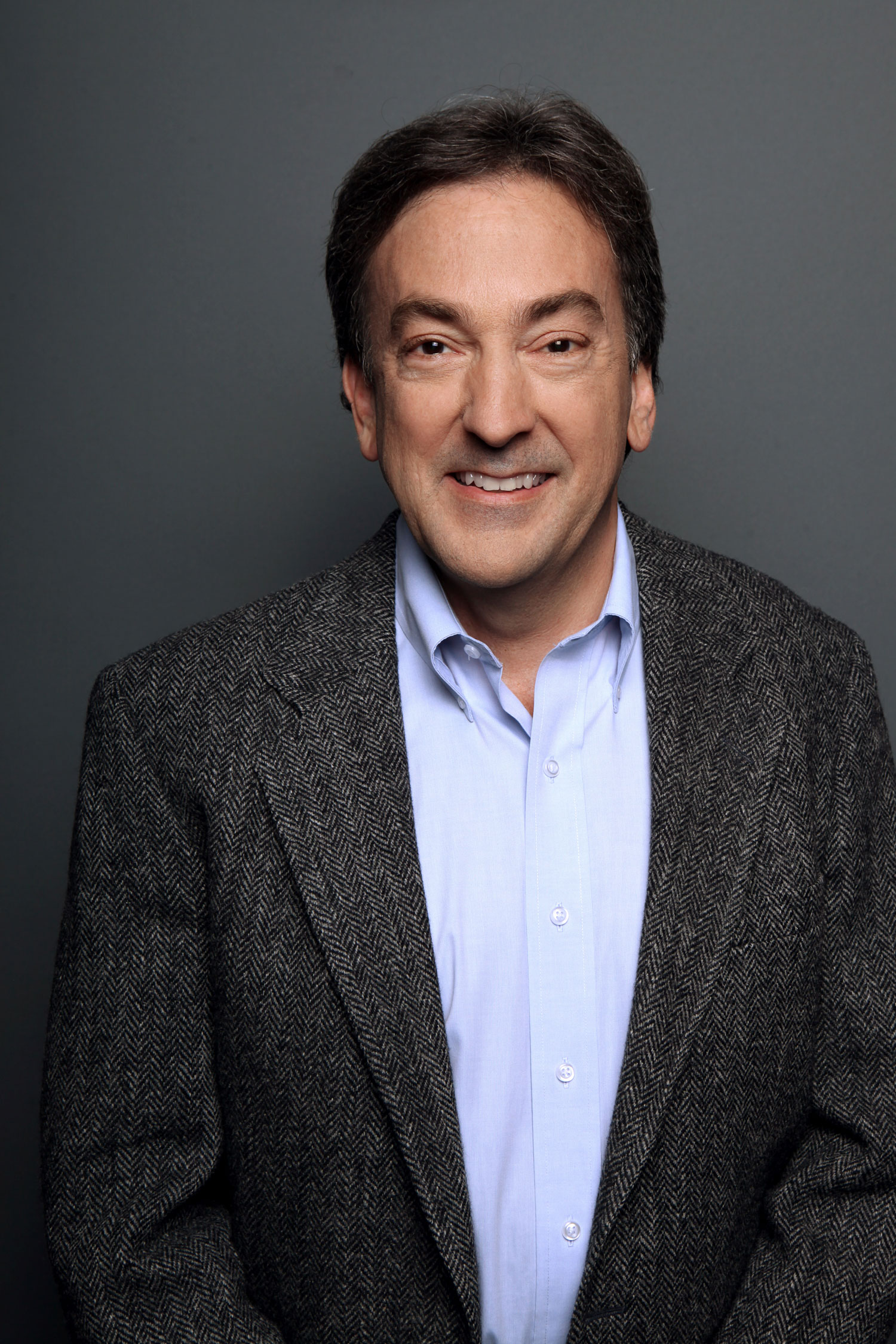An Interview with Frozen II Producer, Oscar-Winning BU Alum Peter Del Vecho

Prior to Frozen, Peter Del Vecho (CFA’80) worked on films like Chicken Little and Princess and the Frog. Photo courtesy of Del Vecho
BU Alum, Producer of Frozen and Frozen II, Calls Reaction to Franchise “Amazing” and “Humbling”
Oscar winner Peter Del Vecho (CFA’80) says team never expected mega success
I’m a BU Today writer and the mom of a three-year-old. My daughter was Elsa for Halloween, we listen to “Let It Go” 238 times a week—a conservative estimate—and just this morning she had a waffle stamped with Elsa’s face. Does this sound familiar to anyone?
The man to thank (or curse?) is BU alum and Quincy, Mass., native Peter Del Vecho (CFA’80), the producer of Frozen (2013) and Frozen II, which comes out Friday, November 22. Del Vecho says even his team, which includes Chris Buck and Jennifer Lee, directors of both films, did not anticipate the franchise becoming the mega phenomenon it has.
When the first film came out, “it was no longer our movie, the world had made it its own,” he emailed in the midst of a hectic press tour late Tuesday night. “It was amazing to watch and quite humbling. We can only hope the world embraces Frozen II the same way.”
Frozen II sees Queen Elsa (again voiced by Idina Menzel, who belts out another addictive ballad) traveling north to a mythical place called Ahtohallan to discover the origins of her powers and find out more about the death of her parents. Joining her on the trip from Arendelle are her sister, Anna (Kristen Bell), Anna’s beau, Kristoff (Jonathan Groff), and snowman Olaf (Josh Gad). With mostly positive reviews, the film has received an 81 percent rating on Rotten Tomatoes. Variety calls it “anything but a mindless remake,” and applauds its pushing “girl-power themes” even further than the original.
For Frozen, Del Vecho won both an Academy Award for Best Animated Film and a Producers Guild of America Award for Outstanding Producer of Animated Theatrical Motion Pictures. Frozen also garnered an Academy Award for Best Original Song (“Let It Go”), as well as a Golden Globe and a BAFTA award. The film is the second highest grossing animated film of all time, earning $1.27 billion at the box office. According to Variety, industry experts expect Frozen II to take home more than $100 million this opening weekend, giving it a jump on the original.
Del Vecho says the idea for a sequel came about a year and a half after the first movie. Disney was working on the short Frozen Fever and “in animation we began seeing the characters come alive again and realized we had missed them,” he says. At the same time, he kept getting asked the same questions during talks with students and artists: “How did Elsa get her powers?” “What is she meant to do with them?” “Why was Anna born the way she was?” “Where were their parents going when their ship went down?” When he returned to the studio, he realized Buck and Lee had the same thoughts, and that’s when they decided they had enough for a sequel.
Frozen is based on the Hans Christian Andersen story “The Snow Queen,” and Del Vecho told BU Today in 2014 that the idea for adapting the fairy tale had been attempted by Disney before. In 2010, they tried again and were soon stumped over the Snow Queen (Elsa) character.
“In the beginning Anna and Elsa weren’t sisters, but as the story developed, we realized that we got more power out of the story if they were sisters,” Del Vecho said. “From the very beginning, the director had the bold idea to tell the story about a different kind of love, not necessarily romantic love.”
The Frozen II story developed the same way, Del Vecho says, and it kept evolving up until about two months ago.
Even though it’s an animated film, the creative team went to Norway, Iceland, and Finland in fall 2016 to do research for the second installment. Visiting when they did influenced the visuals, and “reflected the change in our characters as well as their maturing,” Del Vecho says. Most important, they discovered that “Anna felt very much at home in the enchanted forests of Norway and Finland. She is the perfect fairy-tale character, a nonmagical human living in a magical world. Elsa, on the other hand, felt very much at home in the mythical landscapes of Iceland. Mythic characters are magical and carry the weight of the world on their shoulders. They often do things because others can’t. And they often meet a tragic fate. The realization that we had two different stories, a fairy tale and a myth running in parallel, hugely impacted the storytelling.”
Del Vecho studied theater production at BU and went on to work in theater for 15 years, most of them at the famed Guthrie Theater in Minneapolis. It was there, he says, that he learned the importance of story development and visual storytelling. Both skills made him attractive to Disney Animation, which at the time was turning out hits like The Lion King and Beauty and the Beast. The studio approached him in 1995, and he began in production management, developing such films as 2002’s Treasure Planet and 2005’s Chicken Little, before switching to producing. He produced 2009’s Princess and the Frog, which was nominated for three Oscars.
In 2014, Del Vecho received a BU College of Fine Arts Distinguished Alumni Award, the highest honor given by CFA.
Comments & Discussion
Boston University moderates comments to facilitate an informed, substantive, civil conversation. Abusive, profane, self-promotional, misleading, incoherent or off-topic comments will be rejected. Moderators are staffed during regular business hours (EST) and can only accept comments written in English. Statistics or facts must include a citation or a link to the citation.